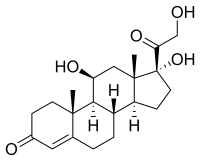
Photo from wikipedia
Although daily variations in drug pharmacokinetics have been reported for a variety of teleost species, the influence of this daily variation on the cortisol response following anaesthesia remains poorly understood.… Click to show full abstract
Although daily variations in drug pharmacokinetics have been reported for a variety of teleost species, the influence of this daily variation on the cortisol response following anaesthesia remains poorly understood. To address this, two experiments were performed. The first experiment described the daily patterns of cortisol and glucose secretion in tilapia (Oreochromis niloticus). The second experiment investigated how the timing of anaesthetic administration (specifically at mid‐light [ML] or at mid‐dark [MD]) affects the induction and recovery times and plasma cortisol and glucose levels of juvenile Nile tilapia exposed to benzocaine, clove oil or tricaine methanesulphonate (MS‐222). The results revealed that the effect on the stress response associated with the moment when anaesthesia took place (ML or MD) varied according to the treatment (p 0.05) or in the benzocaine‐treated group (ML = 38.7 ± 4.90; MD = 38.60 ± 3.69 ng/dl) (p > 0.05). The highest plasma cortisol level in ML was found in the MS‐222‐treated group. All the tested anaesthetics had similar cortisol levels at MD (p > 0.05).
Journal Title: Aquaculture Research
Year Published: 2019
Link to full text (if available)
Share on Social Media: Sign Up to like & get
recommendations!